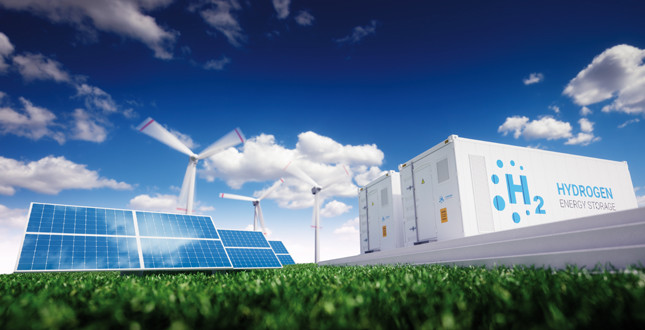


Steve Sutton, Technical Manager at the Heating & Hotwater Industry Council, looks at whether the momentum behind hydrogen as a viable fuel will serve to add impetus to the micro combined heat and power market.
Last October, the Financial Times wrote that Japan wants the Tokyo Olympics of 2020 to be fuelled by hydrogen. Organisers have visions of fleets of hydrogen-fuelled cars carrying athletes from the village to the venues.
They are even exploring the practicalities of a hydrogen-burning Olympic flame to promote one of Japan’s futuristic strategies for the fuel of the future. It seems their view is that it will be hydrogen, not batteries, that will be king, and that this will become the automotive power source of the future.
Toyota and Honda both have fuel cell vehicles in production believing that, despite the greater complexity and cost of the hydrogen fuel cell technology, its superior energy per unit volume when compared with batteries will, in the long run, give it a decisive advantage.
But there is a perception that hydrogen could be dangerous. Unlike petrol, the ultralight lift gas quickly disperses rather than pooling and burning, actually making it much less volatile. But why am I talking about this in a trade magazine for UK installers?
As the UK government develops the case for converting the UK gas infrastructure to a low carbon hydrogen supply, the potential for fuel cells to heat the home and produce electricity starts to become a more affordable, workable prospect.
Fuel cell systems use a different approach to the production of electricity. They are similar to batteries in that they both produce a direct current (DC) through an electrochemical process, without the direct combustion of a fuel source.
Yet, where a battery will deliver power from a limited amount of stored energy, fuel cells can operate continuously, provided it has a non-stop fuel source, making them more suitable to the needs of our homes. A cathode and anode electrode pass charged ions in an electrolyte to generate electricity and heat, and a catalyst is included to enhance the process.
This lack of combustion also offers the potential for clean, quiet, and efficient power generation as it reacts electrochemically, meaning there is negligible air pollution generated when it is in use. This technology is not new. Indeed, it has been under development for over 40 years as an emerging power source. Yet the cost has perhaps been one of the main barriers.
Now, as the government explores the potential to supply hydrogen into the home, manufacturers wait to see what the exact make up and quality of the hydrogen will be. The outcome could see the potential to reduce the manufacturing cost of a current fuel cell by an estimated 30%, eating away at the cost argument.
As the unit will be generating electricity at source, the payback period could reduce sufficiently to make the fuel cell a contender for product of the future. Feed-in tariffs for over production of electricity will further speed up the payback time.
There are also multiple benefits from the fact that electricity is produced locally. Creating power at source will have positive carbon savings and, by reducing demand on the grid, will undoubtedly benefit the already over-stretched electrical network, especially during periods of peak demand.
Installation and servicing of a micro combined heat and power unit is likely to be in line with existing boiler setups, and manufacturers have started to work to produce a qualification to allow gas engineers to work on fuel cell products. Moving forward, this area is likely to require further updates but, with that in place, it will ensure that the technology has the opportunity to see widespread take-up.
If you'd like to keep up-to-date with the latest developments in the heating and plumbing industry, why not subscribe to our weekly newsletters? Just click the button below and you can ensure all the latest industry news and new product information lands in your inbox every week.